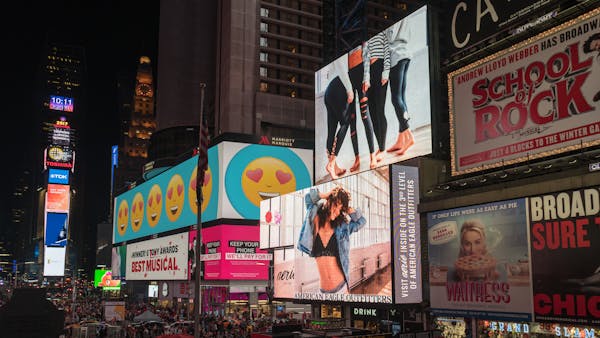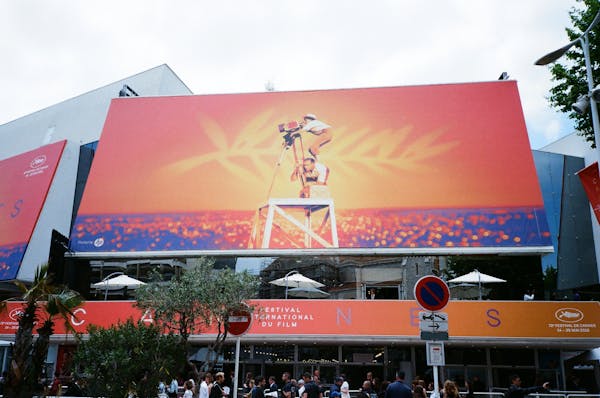Mastering Billboard Advertising: A Comprehensive Guide to Exposure Metrics, Leasing, and LED Technology

Billboard advertising has been a staple of brand promotion for decades, adapting to technological advancements and changing marketing dynamics. As a business looking to leverage out-of-home (OOH) advertising, understanding the nuances of billboard exposure metrics, LED billboard advertising, and billboard leasing contracts can significantly enhance your advertising effectiveness. This guide delves deep into these areas, providing a blueprint for marketers and business owners to maximize their billboard advertising strategy.
Understanding Billboard Exposure Metrics
Billboard exposure metrics are critical for gauging the success of your OOH campaigns. These metrics provide insights into the visibility, engagement, and overall impact of your billboards. Key exposure metrics include daily effective circulation (DEC), visibility adjusted contact (VAC), and impressions.
- Daily Effective Circulation (DEC): This metric estimates the number of vehicles and pedestrians that pass by a billboard each day. It helps advertisers understand the potential reach of their advertisements.
- Visibility Adjusted Contact (VAC): VAC accounts for factors that influence the visibility of a billboard, such as angle, distance, and obstructions. This metric offers a more accurate measure of how many people actually see the billboard.
- Impressions: This is the total number of times people are likely to see the advertisement. Impressions are influenced by traffic, billboard size, and the duration of the ad display.
By analyzing these metrics, advertisers can select optimal billboard locations and adjust campaigns to improve visibility and effectiveness.
The Rise of LED Billboard Advertising
LED billboard advertising represents a significant advancement in the realm of OOH advertising. These digital billboards offer dynamic, vivid, and flexible advertising solutions that capture the attention of a wide audience. Here’s why LED billboard advertising is becoming increasingly popular:
- High Visibility: LED billboards are bright and clear, making them visible even from long distances and in various lighting conditions.
- Dynamic Content: Unlike traditional billboards, LED billboards can display multiple advertisements in a loop, allowing for greater content diversity and frequency.
- Real-Time Updates: Advertisers can update LED billboard content in real-time, making it ideal for time-sensitive promotions and messages.
- Interactive Capabilities: Some LED billboards include interactive elements, engaging viewers and creating memorable experiences.
The flexibility and effectiveness of LED billboard advertising make it an excellent choice for brands looking to make a significant impact in high-traffic areas.
The Ins and Outs of Billboard Leasing Contracts
Securing a billboard space involves navigating the complexities of billboard leasing contracts. These agreements between the billboard owner and the advertiser outline terms regarding duration, payment, content, and maintenance of the billboard. Key aspects to consider in billboard leasing contracts include:
- Lease Duration: Contracts specify the time period the billboard space is leased for, which can range from a few months to several years.
- Rental Costs: Costs can vary based on location, billboard size, and market demand. It’s vital to negotiate terms that fit your budget and advertising goals.
- Content Approval: The contract should clarify the process for content approval, ensuring that the billboard content adheres to local regulations and landlord policies.
- Maintenance: Maintenance responsibilities should be clearly divided between the landlord and the advertiser to ensure the billboard remains in excellent condition.
Understanding these contract elements can help advertisers avoid legal issues and ensure a smooth advertising experience.
Maximizing Impact with Strategic Billboard Placement
The placement of your billboard can significantly influence its success. Strategic placement involves considering several factors to maximize exposure and engagement. These factors include:
- High Traffic Areas: Placing billboards in areas with high vehicular or pedestrian traffic increases visibility.
- Target Audience: Billboards should be located where the target demographic frequently travels or congregates.
- Competitor Proximity: Positioning your billboard near competitors can capture the attention of an already interested audience.
- Line of Sight: Ensure the billboard is placed at an ideal height and angle for easy visibility without obstructions.
Considering these factors ensures that your billboard not only reaches the largest audience but also engages the right demographic effectively.
Measuring the ROI of Billboard Advertising
Return on investment (ROI) is a crucial metric for any advertising campaign. Measuring the ROI of billboard advertising involves assessing both quantitative and qualitative aspects. Quantitative measures include increase in sales, website traffic, and social media engagement following the campaign. Qualitatively, increased brand recognition and customer feedback can indicate success.
To accurately measure ROI, advertisers should set clear objectives before the campaign and use tools like surveys, traffic counters, and digital analytics to track various indicators. Combining these insights with the initial goals of the campaign will provide a comprehensive view of its effectiveness.
Conclusion
Billboard advertising remains a powerful tool in the marketer's arsenal, especially when combined with modern technology and strategic planning. By understanding and leveraging billboard exposure metrics, embracing the dynamic capabilities of LED billboard advertising, and carefully negotiating billboard leasing contracts, businesses can effectively reach their target audience and achieve desired outcomes. With the right approach, the age-old billboard can still make a significant impact in today's digital world.
As we look towards the future of advertising, billboards will undoubtedly continue to evolve, integrating more advanced technologies and offering even more personalized and interactive advertising solutions. Staying abreast of these changes and continuously adapting strategies will be key to leveraging billboards effectively in the dynamic landscape of outdoor advertising.




